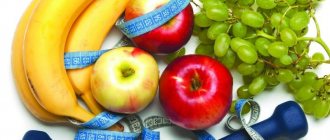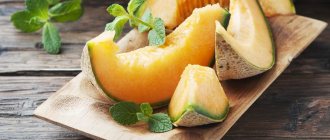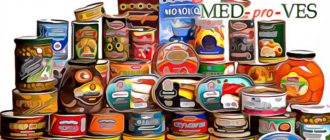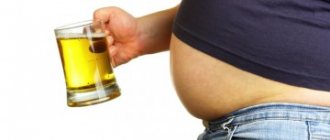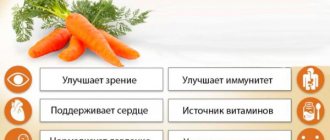Indeed, it is better to avoid excess salt consumption: it is harmful. Many people know about this, but they don’t know how much. For example, in the USA, experts have calculated that if people eat just 3 grams less salt every day, this will help avoid 92 thousand premature deaths and 100 thousand heart attacks. And this is only in one country and for one year!
But salt is not only about heart attacks, strokes, high blood pressure and heart failure. Recently, Japanese scientists published the results of a study. During it they observed 80 thousand people. It turns out that excessive consumption of salty foods increases the risk of developing cancer by 15%, primarily tumors of the stomach, intestines and lungs. But experts have guessed about this for a long time. Moreover, this connection between salt, stomach cancer and some other diseases was even included in the official documents of the World Health Organization. Among other “salty” diseases, osteoporosis, kidney stones, cataracts and diabetes are noted there.
Question and answer What is the difference between table salt and table salt?
Is it possible to completely avoid salt when cooking?
Although the sodium contained in salt is vital for our body, you can completely avoid using salt when cooking. It seems incredible, but it is true. And that's why:
- There is enough sodium in the composition of the primary products from which we cook - in meat, vegetables, fruits, cereals, and so on. With them we will receive 0.5-3 g of salt per day, and this is quite enough;
— plus we will still receive additional sodium in decent quantities from finished products made industrially. For example, from bread, sausages, semi-finished products;
— sodium deficiency threatens only in case of large losses, and in ordinary life this practically does not occur.
Salt according to GOST. Will the new standards kill the usual “table salt”? More details
Removing excess
Many people are concerned about the question of how to remove salt from the body for weight loss if there is already an excess of it there. This is the easiest thing to do. It is quite enough to sit on a salt-free diet for a couple of days and at the same time drink at least 2 liters of liquid per day. And there is no need to be afraid that an excess of salt will turn into a lack of it, and it will all be washed out of the body. The body is a perfect self-regulating system. Within a few days, a salt deficiency will not form, but its excess, along with excess liquid, will come out, lightening your weight by 2-3 kilograms.
But don't be overly happy. If you return to uncontrolled salt consumption again, the scales will quickly move back. You can maintain the result and improve the condition of the body by reducing the amount of salt to 4-5 grams (less than a teaspoon) per day.
To do this, at first you will have to salt ready-made food and avoid foods that already contain a lot of salt:
- all types of conservation;
- meat and fish semi-finished products;
- sausages and prepared pates;
- soup seasonings and food concentrates;
- any fast food.
Not to mention the fact that such a diet will significantly relieve the load on the kidneys and digestive system, the effect of it will be noticed very quickly. Even if the rest of your diet and lifestyle are left unchanged, the weight will still begin to gradually decrease to a certain level, but then stop.
Salt and women
Previously, it was believed that salt increases blood pressure, so its consumption has a negative effect on blood vessels. But this year, a study by Australian scientists was published proving that salt itself harms blood vessels. It makes their wall denser, and this is a powerful factor in the development of both hypertension and vascular sclerosis.
In 2008, they accidentally discovered that in older women, excess salt intake leads to calcium loss, which means it weakens bone tissue, leading to osteoporosis. This disease is the scourge of modern civilization.
It is associated with almost all hip fractures and spinal deformities in the elderly. But last year it turned out that salt increases calcium loss even in girls. This means that the more they like salty foods, the higher their risk of developing osteoporosis and its associated consequences.
Gastroenterologist, Candidate of Medical Sciences Konstantin Spakhov:
— Doctors have long known that there is not just a statistical relationship between salty foods and stomach cancer. They know the mechanism of how salt contributes to the occurrence of this terrible disease. It has already been precisely established that the development of such a malignant tumor is promoted by a special bacterium, Helicobacter pylori. It is present in the stomach of many people, contributing to the development of peptic ulcers and gastritis. But, in addition, it has been established that owners of this bacterium have a much higher risk of stomach cancer. And salt, being a preservative, as strange as it may seem, only helps the development of this bacterium. Thanks to it, Helicobacter only becomes more active and reproduces much better. This means that lovers of salty foods create ideal conditions for this bacterium in their stomachs. That is why such people have an increased risk of developing not only gastritis and peptic ulcers, but also stomach cancer.
Salt-free diet for weight loss
If you suffer from chronic diseases or just want to lose weight, then it’s worth finding out how to eat salt when losing weight. It is recommended to add spices, onions or garlic to dishes and products. When following a diet, all food should be prepared and consumed without salt. It is recommended to eat food about 4-5 times a day. The principle of nutrition should be fractional.
The product ratio table will help you create a menu. The composition of the dishes may include vegetable oil (1 tablespoon per day) and seasonings. During the diet, you need to include the following set of products in your diet: meat, fish (processing of products with sea salt is allowed), rye bread (best eaten with bran up to 200 g per day), vegetables (can be eaten with sea salt, curry spice is allowed for dishes ), herbs (for example, basil). Eliminate sour, spicy foods, bananas, sugar, watermelons, grapes, jam, pasta from the menu. The diet should not include marinades or confectionery products.
For the first three days, eat skinless chicken (no more than 500 g per day). For the next three days, low-fat fish is recommended (up to 500 g per day). The third cycle consists of porridge with water (up to 250 g of cereal per day is allowed). The fourth cycle is accompanied by the consumption of vegetables (1-2 kg can be eaten daily with sea salt). In the last cycle, you should consume about 2 kg of fruit daily (all types of fruit are allowed, except bananas). During the diet, you are allowed to drink herbal tea without sugar and still water.
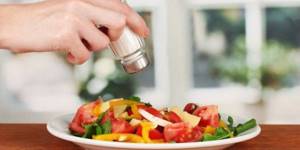
Contraindications
You should not completely eliminate sodium chloride from your diet if you have acute kidney inflammation. A salt-free diet increases the risk of developing cardiovascular diseases. It is not recommended for people suffering from myocardiosclerosis, chronic inflammatory bowel diseases, and articular rheumatism. If you have osteoporosis, then you should avoid restrictions when consuming the mineral - when sodium chloride is absorbed, it accumulates in the bones. Strict adherence to a diet can trigger the development of osteoporosis and other bone problems.
A salt-free diet is not recommended if the pancreas does not produce insulin, during breastfeeding, or for persons with an enlarged thyroid gland. You should not limit your menu in the summer; the best time for a diet is winter and autumn. Remember that in the heat a person, as a rule, sweats often (an important chemical trace element - sodium) is lost. The balance of potassium and other substances in the body is disrupted.
Efficiency
When consuming meat and vegetables without sodium chloride, protein clumping in the body is prevented. If salt is used to a minimum when losing weight, this will help eliminate diseases of the blood vessels and the genitourinary system. If you reduce the consumption of the mineral, the heart muscle will become stronger (in general, the heart will work without interruption). A deficiency of sodium chloride will help get rid of puffiness and bags under the eyes, the complexion will improve, and blood pressure will normalize.
Consequences
Harm to the body occurs when sodium chloride is unreasonably excluded from the diet. With severe menu restrictions, weakness, hypertension, and hyponatremia occur. The brain may stop working properly. Diastolic and systolic murmur may be observed, blood glucose, the hormone renin, and cholesterol will increase. If you have stage 2 diabetes, a salt-free diet can be fatal.

How are table salt and sodium related?
Some products, especially those made by large international manufacturers, often list sodium content on the label. This is useful information. Knowing it, you can calculate the amount of salt in the product. Conversely, knowing the dose of salt, you can calculate how much sodium is in the product.
It's easy to calculate. Multiply the sodium in mg by 2.5 to get the salt content. For example, if the label states that one serving of a product contains 0.4 g of sodium (that's 400 mg), then you need 0.4 g x 2.5. You will get 1 g of salt. Conversely, if the amount of salt in 100 g of product is 2 g, then dividing this dose by 2.5, you get 0.8 g of sodium, or 800 mg. At the same time, you need to know that the daily intake of sodium is no more than 2-2.4 g. In terms of regular salt, this is 5-6 g.
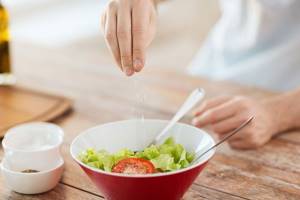
A pinch of dementia. What are the dangers of excessive salt consumption? More details
Causes stomach cancer
https://www.youtube.com/watch?v=ytcopyrightru
Added salt increases the risk of stomach cancer. The International Cancer Research Fund considers canned foods - meat, fish and vegetables - to be especially dangerous. Studies have shown that people who ate these foods regularly got sick more often. Sodium irritates the gastric mucosa. Inflammation may begin, which leads to changes in cells. In addition, salt is an ideal breeding ground for the bacteria Helicobacter pylori; medicine has proven its role in the development of cancer.
What food additives contain sodium?
Acidity regulator, stabilizer and emulsifier sodium citrates, E331 E331(iii) citric acid salt. They are used as acidity regulators in marmalade, jams, preserves, jellies and other confectionery products, as salt-melting agents in processed cheeses, dairy products and canned food, and in a host of other products.
Flavor enhancer monosodium glutamate, e621. It is used in many products: sausages and meat products, canned food, semi-finished products and almost any product containing protein. Not used only in sweet and dairy products.
Sweetener sodium cyclamate, e952. Usually used in combination with other sweeteners.
Preservative and color fixer sodium nitrate, E250. It is used independently in almost all sausages and many meat products, and is part of most curing mixtures for them.
Baking powder sodium bicarbonate (baking soda), e500(ii) and other sodium carbonates E500(i) and e500(iii). They are widely used in bakery and confectionery products, dairy products, meat processing products and so on.
Doctor of Medical Sciences and famous nutritionist Viktor Konyshev:
— At different times and in different countries, salt consumption standards have always differed. For example, during the Soviet years, the Institute of Nutrition recommended 16 g of salt per day. In most countries, the daily dose is 6-9 g, and WHO, as the most influential organization, has now reduced it to 5 g. And today they are trying to adhere to this norm almost everywhere. This is how much salt is contained in about one teaspoon. And this is all the salt that you can eat during the day - both the one you add to your food yourself and the one that manufacturers have already added to it.
But I would like to point out that it is not the salt itself that is harmful. Table salt is a compound of sodium and chlorine, called sodium chloride. And the sodium it contains is harmful. Therefore, it is important to reduce sodium intake in general, including in other foods that contain it. For example, many people use soy sauce instead of salt to improve the taste. This is wrong, because it also contains a lot of sodium in the form of the flavor enhancer monosodium glutamate.
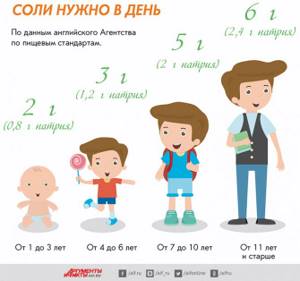
Click to enlarge
How to replace salt?
You can learn about safe consumption from the article “How much salt do you need to avoid harming your health?” If you decide to give up salty foods for a while, then you will have to get used to the new taste of dishes. In most cases it will be bland, tasteless and unpleasant. There are several culinary tricks to achieve a distinct taste without adding salt to your food.
Natural flavor enhancers are:
- lemon juice. Can be used as a salad dressing. It will not only add new taste qualities, but also fill the dish with vitamin C;
- onion and garlic. They give dishes a pronounced taste and aroma, making them a little spicier;
- spices. The most fragrant will be oregano, sage and cilantro, they can be added instead of salt;
- ginger root. It has a little bitterness and a noticeable spiciness, which allows you not to add salt to your food, but still be satisfied with the result.
Thus, the answer to the question of whether salt makes you fat will be positive, but it does not act directly, but indirectly. Gain on the scale may be a result of fluid retention or frequent snacking due to a strong appetite. Therefore, during the period of weight loss, it is advisable to replace salt with safer products.
How much salt is in foods?
If you cook the dish yourself, you can estimate how much salt you put in it. But for finished domestic products this is completely unrealistic. Why? If in Western countries it is mandatory to indicate the salt and sodium content in products, this information is given even for one standard serving, then in our country they only indicate the fact of the presence of salt in the product. There is no mention of its quantity. Meanwhile, prepared foods are one of the main sources of salt. Manufacturers do not spare it: it is very cheap and can act as a flavor enhancer. The result is often an overdose. For example, an examination of bread carried out by NP Roskontrol in a test laboratory showed that the concentration of salt in ordinary bread is very high. Typically 1.3-1.4 g of salt in every 100 g of bread. This means that if a person eats in accordance with the recommendations of the so-called consumer basket, then with only one bread he will receive more than the daily allowance of salt. After all, the daily norm of bread in this basket is 468 g, and, therefore, it contains as much as 6-6.5 g of salt. This is a little more than half a loaf or loaf. Such nutrition is extremely harmful for persons with heart disease, kidney disease, or those prone to hypertension. And there are a lot of such people. In addition, this is unacceptable for children. There is a special technical regulation for them, which stipulates that the salt content in bread should not exceed 0.5%, that is, 0.5 g per 100 g of bread. This is 2.6-2.8 times less than in real bread. But it is difficult to find such children's bread on sale.
Article on the topic
Black bread and mineral water. Which foods contain the most salt?
Causes kidney stones
The more salt you eat, the more likely you are to form stones. Excess sodium increases the natural leaching of calcium from bones. Therefore, salts accumulate in the urine - calcium oxalate or calcium phosphate. Crystals grow from them, which then turn into stones. This type of stone is found in 80% of patients.
What is their horror? A small stone may travel to the bladder on its own. Large - gets stuck on the way, in the ureter. The muscles begin to contract to push the urine out, but it cannot come out. Because of this, renal colic begins - unbearable pain in the lower back, abdomen, side or groin. Stones are more common in men and children. The reason is a change in eating habits - we began to eat a lot of processed foods, which means more sodium.
Approximate salt content in products
Calculations are given per 100 g of product.
- Butter 0.2
- Cookies, sweets 0.9-1.5
- Boiled sausage, frankfurters 1.8-2.5
- Chips 1.5-2
- Eggplant caviar, zucchini caviar (canned) 3.5-4
- Salmon, pink salmon (canned) 4
- Salted herring 25
Hygienist and head of the expert department of the Roskontrol organization Andrey Mosov:
— The salt content in bread is one of the most important problems, since its excessive consumption largely determines the high incidence of circulatory diseases among Russians. After 30 years, every second Russian has high blood pressure. And, according to scientists, the contribution of bread to the fact that this problem exists is very large. That is why one of the main directions of Russian state policy in the field of healthy nutrition of the population is a systematic reduction in the consumption of table salt, including by reducing its content in bread.
How to cook without salt
- Try to add greens when cooking instead of salt.
- Use more garlic, ginger, capsicum and lemon when frying.
- Never use bouillon cubes or other similar ready-made seasonings when cooking. They have a lot of salt and sodium.
- When preparing fish and seafood, pour lemon juice over them and do not use salt.

Cookbook. Will salt become more expensive, and what kind does it come in? More details
Features of salt, effects on the body

Salt is a naturally occurring mineral. And it has quite a lot of valuable properties. For example, sea salt is widely used in various cosmetic procedures. The mineral is effective in processing food products so that they do not spoil longer and are reliably protected from a variety of bacteria. At the same time, the taste of dishes that are supplemented with salt becomes significantly better and brighter.
It is known that salt allows you to destroy harmful microorganisms, as well as bacteria in the gastrointestinal tract. Ultimately, the level of beneficial bacteria also increases. Unfortunately, when using table salt, it is not possible to immediately remove all these bacteria, but they clog the blood vessels. Many nutritionists believe that sea salt is the best choice.
Which salt is less harmful?
According to modern views, “dirty” salt, which contains more impurities, is considered the least harmful. It is not necessarily pure white and can have different shades: this is all due to the fact that it contains more foreign substances and salts - potassium, magnesium, calcium, iodine compounds and other elements. How can you explain that “dirty” salt is healthier than “clean” salt? It seems that we have always been convinced that clean products are always better. It's all about microimpurities of other salts and substances. They are called minor (that is, there are very few of them), but they weaken the negative effects of the main component - sodium chloride. Therefore, try to always buy exactly this kind of salt: sea, colored, cage or self-planted. All of these types of salt are slightly less harmful than rock or evaporated salt.
Contraindications, side effects

It is necessary to consider lists of contraindications, as well as side effects that may occur when giving up salty foods even for a short period of time. Under the following conditions, such diets are prohibited:
- Children under 18 years old, elderly people;
- For kidney and liver diseases;
- For diseases of the cardiovascular system;
- Hypertension;
- Excessive physical activity;
- Malfunctions of the endocrine system, thyroid disease.
During pregnancy and lactation, it is also recommended to abandon such a limited menu. Professional athletes cannot diet in this way, since they experience great physical stress.
Here are the possible side effects of salt-free diets:
- Weakening of bones due to lack of sodium chloride;
- General malaise, fatigue;
- Muscle weakness;
- Lack of appetite;
- Nausea;
- Failures in metabolic processes;
- Pressure drop;
- Digestive disorders.
Be sure to read: About therapeutic fasting according to the Suvorin method
Store-bought products usually contain salt, but if you prefer more natural foods and include a maximum of fresh vegetables and fruits in your diet, the likelihood of a lack of salt increases.


